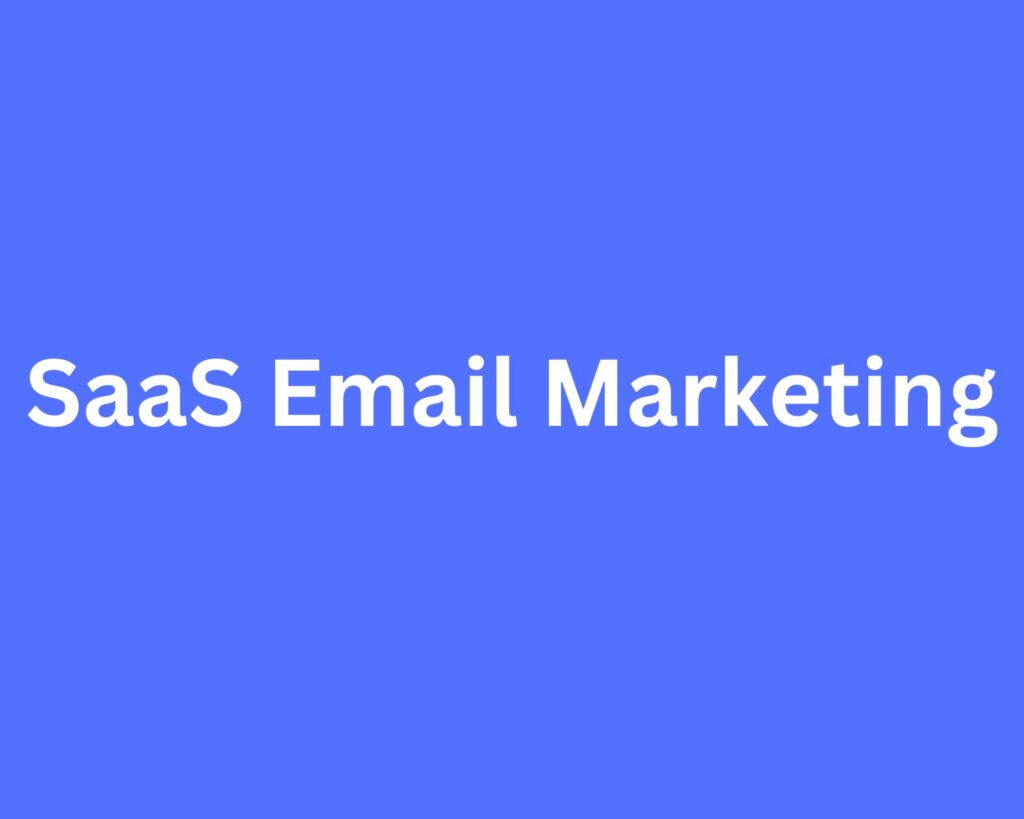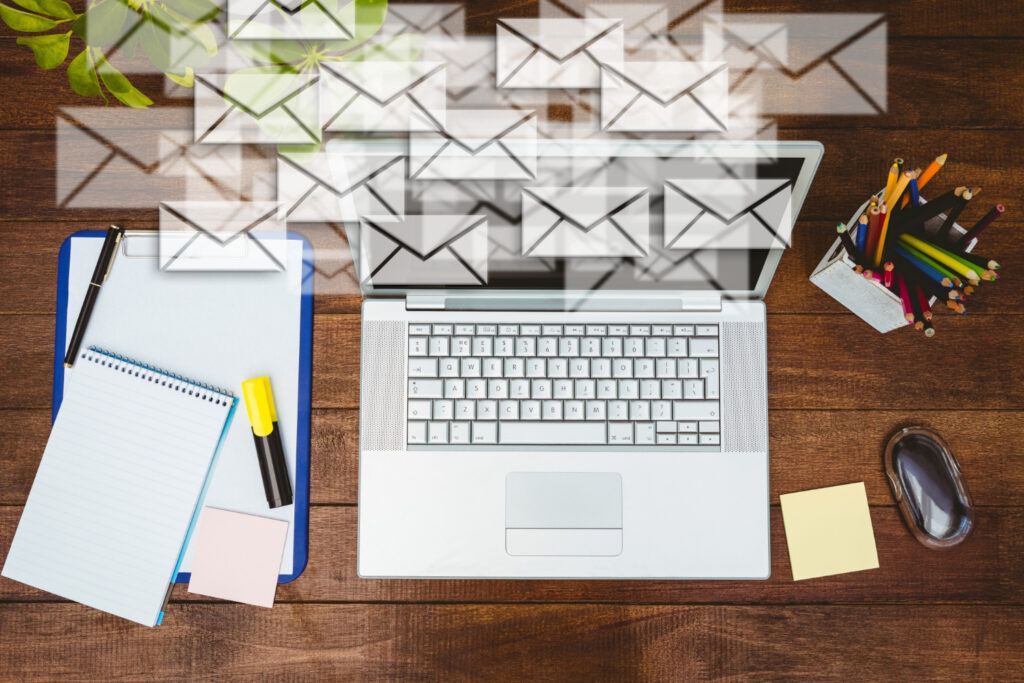SaaS email marketing is different from regular email marketing. Since there are a huge 4.37 billion people using email, and a massive 99% of them check their emails every day, it’s not surprising that email has become the usual way for both big companies and new startups.
As a SaaS marketer you know many SaaS (Software as a Service) companies have complicated and lengthy customer journeys. It requires time and work to guide potential customers through the process, and marketers want to find ways to make that time shorter to make more money.
In this article, we’ll look into the objectives and significance of email marketing and key metrics to monitor SaaS email marketing.
What is SaaS email marketing?
SaaS email marketing means promoting a SaaS (Software-as-a-Service) business using emails. This includes contacting possible customers at various points in their journey to encourage them to start using the SaaS product.
The Significance of Effective Email Marketing Strategies for SaaS Businesses
If you have a Saas company you need smart email strategies to succeed in a competitive market. To boost sales, and grow customer base you need to make sure they reach inboxes so that you can build good relationships with the customer base. Email marketing is a powerful way to attract and keep customers when done right.
The Aims and Objectives of SaaS Email Marketing Campaigns
SaaS email marketing campaigns are carefully planned with specific goals in mind. These goals include:
Getting New Leads: Create emails to encourage users to sign up, download, or register for the service.
Helping New Users: Help the new users understand the value of your SaaS product by guiding them through the process of getting started.
Engage with Existing Customers: Build your brand loyalty by interacting with current customers and encouraging continued use of the product or service
Selling More to Current Customers: Finding opportunities to sell additional features, upgrades, or related products to existing customers.
Keeping Customers: Building lasting relationships with customers, reducing the number of customers who leave, and maximizing the value of each customer over time.
Reactivating Inactive Users: Bringing back users who haven’t been active by using targeted campaigns to reignite their interest and reintegrate them into the customer journey.
Understand the Target Audience
Before creating the content you should know your targeted audience. You should have a deep understanding of your buyer’s needs, pain points, and what motivates them to buy your service. Identify and define your audience based on demographics, behaviors, and preferences. When you have this information you can tailor your email campaign to target different segments within the target market. Use the below methods to segment your audience.
1. Demographic Segmentation: In demographic segmentation divide your audience based on age, gender, location, and job title.
2. Behavioral Segmentation: Segment the audience based on user behavior, such as engagement with previous emails.
3. Firmographic Segmentation: This segmentation is based on company size, industry, and revenue and applies to B2B SaaS.
Gathering Data and Conducting Market Research
Data gathering and market research are crucial for understanding your target audience. This involves analyzing existing customer data, conducting surveys, interviews, and focus groups, and monitoring industry trends and competitors. These activities provide valuable insights into the pain points, preferences, and challenges faced by your target audience, enabling you to create more relevant and effective email campaigns.
Utilizing Customer Feedback and Behavioral Insights
Listening to customer feedback and monitoring behavioral insights is key to refining your email marketing strategies. By analyzing email engagement metrics, website analytics, and user interactions, you can gain valuable insights into what content resonates with your audience. Additionally, actively seeking and incorporating customer feedback helps you address their needs and preferences, improving the relevance and effectiveness of your email campaigns.
Crafting compelling email content is crucial for engaging your audience and driving conversions. Here are some key strategies to consider:
1. Writing attention-grabbing subject lines: The subject line is your first opportunity to capture the reader’s attention. Keep it concise, intriguing, and relevant to the email’s content. Consider using personalization techniques, such as including the recipient’s name or referencing their past interactions with your brand.
2. Designing personalized and relevant email templates: Tailor your email templates to resonate with your audience. Use their demographic and behavioral data to create personalized experiences. Segment your email list based on factors like past purchases, preferences, or engagement level to deliver targeted content that feels relevant and valuable.
3. Effective use of storytelling techniques in email content: As a marketer to evoke emotional responses you need to use descriptive language, vivid imagery, and compelling narratives. if you want to captivate readers highlight how your product or services solves a problem. Use storytelling in your emails to make a lasting impression.
4. Incorporate persuasive language and call-to-action (CTA) strategies: To encourage action use persuasive language throughout your email. Emphasize the benefits and communicate the value proposition of your offer. Place visually appealing strategic CTAs to stand out. To create a sense of FOMO consider using urgency or scarcity techniques.
Optimizing email deliverability and open rates is crucial for the success of your email marketing campaigns. Here are some strategies to consider:
1. Implement proper email list hygiene and segmentation: Regularly clean your email list by removing inactive or bounced email addresses. Segment your list based on user preferences, demographics, or engagement levels to send more targeted and relevant content to your subscribers.
2. Improve email deliverability and avoid spam filters: Ensure that your email infrastructure is set up correctly, including authentication protocols like SPF, DKIM, and DMARC. Follow best practices for email content, such as avoiding spam trigger words and using a reputable email service provider (ESP). Monitor your sender reputation and keep an eye on email deliverability metrics.
3. A/B test subject lines and sender names: Experiment with different subject lines and sender names to find the most effective ones for increasing open rates. Test different approaches, such as including personalization, asking intriguing questions, or using a sense of urgency. Analyze the results to identify patterns and optimize your future campaigns.
4. Leverage personalization and behavioral triggers: Personalize your email content based on subscriber data, such as their name, previous interactions, or purchase history. Use behavioral triggers to send automated emails based on specific actions or events, such as abandoned carts or completed purchases. Tailoring your messages to individual recipients can significantly improve open rates and engagement.
5. Analyze and optimize email open rates: Track and analyze your email marketing KPIs to understand which campaigns and subject lines perform best. Identify trends and patterns to inform your future email strategies. Experiment with different elements, such as email design, layout, and calls to action, to optimize open rates.
Nurturing customer relationships through email sequences is an essential aspect of effective marketing. Here are some strategies and tips to consider when designing and implementing email sequences:
1. Designing effective onboarding email sequences: Onboarding sequences are crucial for guiding new customers and ensuring a smooth introduction to your product or service. Create a series of well-crafted emails that provide valuable information, highlight key features, and address common pain points. Personalize the content to make it relevant and engaging for each recipient.
2. Drip campaigns and nurturing leads through the sales funnel: Drip campaigns involve sending a series of automated emails to nurture leads and guide them through the sales funnel. Tailor the content based on the recipient’s position in the buyer’s journey. Provide relevant information, showcase product benefits, and include compelling calls to action to encourage further engagement and conversion.
3. Strategies for segment-specific email sequences: Segment your audience based on demographics, preferences, or behaviors to deliver targeted email sequences. Customize the content and messaging to resonate with each segment’s specific needs and interests. This personalization enhances the relevance of the emails, increasing the chances of engagement and conversion.
4. Re-engagement and win-back email campaigns: Sometimes, customers become disengaged or inactive. To re-engage them, design targeted email campaigns that offer incentives, exclusive content, or special promotions. Use persuasive copy and compelling offers to grab their attention and encourage them to take action. Similarly, win-back campaigns are designed to bring back lapsed customers by reminding them of the value you provide and offering incentives to re-engage.
5. Leveraging customer feedback loops: Use email sequences to gather valuable feedback from your customers. Send surveys or request reviews and testimonials to understand their experiences and improve your offerings. Show appreciation for their feedback and address any concerns promptly to strengthen the customer relationship.
Key metrics to monitor for SaaS email marketing include:
1. Open Rate: This metric measures the percentage of recipients who open your emails. It indicates the effectiveness of your subject lines and helps assess the initial engagement of your audience.
2. Click-Through Rate (CTR): CTR measures the percentage of recipients who click on links within your emails. It provides insights into the relevance and effectiveness of your content and calls to action.
3. Conversion Rate: The conversion rate tracks the percentage of email recipients who complete a desired action, such as signing up for a trial, making a purchase, or upgrading their subscription. It helps evaluate the overall effectiveness of your email campaigns in driving desired outcomes.
4. Bounce Rate: Bounce rate indicates the percentage of emails that were not successfully delivered to recipients’ inboxes. High bounce rates may suggest issues with email deliverability or outdated email lists.
5. Unsubscribe Rate: Unsubscribe rate measures the percentage of recipients who choose to opt out from receiving future emails. Monitoring this metric helps gauge the relevance and value of your email content to subscribers.
To utilize email analytics tools and platforms, consider using popular email marketing platforms such as Mailchimp, Constant Contact, or Sendinblue. These tools provide robust analytics and reporting features to track key metrics, segment your audience, and optimize your email campaigns.
Implementing A/B testing allows you to compare different versions of your emails to determine which elements (e.g., subject lines, content, design) perform better. By testing and iterating, you can continuously improve the effectiveness of your emails and optimize their impact on your conversion rates.
For continuous optimization of email campaigns, regularly review and analyze your email metrics to identify trends, patterns, and areas for improvement. Experiment with different strategies, such as personalization, segmentation, and automation, to enhance engagement and conversion rates.
Analyzing customer engagement and conversion rates involves studying how recipients interact with your emails, such as the time spent reading, clicks, and actions taken. This data can help tailor your content and email sequences to better align with customer preferences and improve conversion rates.
Get in touch with the Gignaut team today to start measuring and improving your marketing efforts.
Check the B2B SaaS Marketing Handbook to learn more.
SaaS Email Marketing FAQ
What is SaaS Email Marketing
SaaS email marketing refers to the process of promoting a SaaS (Software-as-a-Service) business through email platforms. It involves reaching out to potential customers at different stages of the customer journey to encourage them to convert and use the SaaS product.
Why is email marketing important for SaaS businesses?
Email marketing is important for SaaS businesses because it is a powerful tool for various purposes. It allows you to engage with subscribers, collect data, nurture leads, educate customers, and increase conversion rates. By utilizing targeted and personalized email campaigns, SaaS businesses can effectively communicate with their audience, build brand loyalty, and drive growth.
How can SaaS email marketing campaigns benefit my business?
SaaS email marketing campaigns can benefit your business in several ways. They help you stay connected with your audience, provide valuable information, showcase new features or updates, and address customer concerns. By delivering relevant and compelling content, you can enhance customer engagement, increase conversions, and ultimately boost your SaaS business’s success.
What are the goals of SaaS email marketing?
The goals of SaaS email marketing include increasing customer acquisition, improving customer retention, driving product adoption, promoting upsells or cross-sells, nurturing leads, and enhancing overall customer satisfaction. Through strategic email campaigns, SaaS businesses aim to build strong relationships with their audience, drive revenue growth, and maximize the value they provide to customers.
Uzma is a Professional Content Writer and Certified Digital Marketing Expert





